 A lot has been written about the contents of the MOSAIC NPRM and many people and organizations have been able to comment on it to the FAA. Much of the commentary has been around the extension, or in some cases, curtailing of existing privileges for Sport Pilots, aircraft that can fit into the Light Sport definition and Light Sport Repairman certifications. I don’t plan to re-hash any of that here. This article will focus on what some of these changes could mean, in practical terms, to the market for Light Sport Aircraft and its customers. As you will see, it has the potential to be highly disruptive which not everyone will be happy about but will do so in a way that also opens up opportunities to a wider audience.
A lot has been written about the contents of the MOSAIC NPRM and many people and organizations have been able to comment on it to the FAA. Much of the commentary has been around the extension, or in some cases, curtailing of existing privileges for Sport Pilots, aircraft that can fit into the Light Sport definition and Light Sport Repairman certifications. I don’t plan to re-hash any of that here. This article will focus on what some of these changes could mean, in practical terms, to the market for Light Sport Aircraft and its customers. As you will see, it has the potential to be highly disruptive which not everyone will be happy about but will do so in a way that also opens up opportunities to a wider audience.
Before delving any deeper, let’s dispel the myth held by some in general aviation that Light Sport has been a “failure”. Yes, like pretty much any revolution, its first manifestations probably did not meet the hype, but it has indelibly changed the aviation landscape in positive ways for all aviators. I will briefly hit a few of these:
- BasicMed would still be a twinkle in the eye of AOPA and others if the hard proof from Sport Pilots not dying en-masse and crashing into houses the moment their medicals expired had not provided the empirical evidence supporting the proposed relaxations.
- Angle of attack indicators, glass panels, digital autopilots and other aids to safe flight and situational awareness came from the experimental market into the Light Sport market and proved very quickly that compulsory FAA approvals only served to delay and make less affordable, potentially lifesaving technologies.
Major changes to Part 23 certification for small aircraft to allow them to conform with ASTM consensus standards came directly from the (largely) positive experiences from Light Sport aircraft that were being made to a consensus standard. - The number of pilots exercising Sport Pilot privileges far exceeds the number of Sport Pilot licenses issued because every expired medical creates a Light Sport eligible pilot. A very large percentage of pilots exercising Sport Pilot privileges fall into this category. Accident statistics clearly support the notion that expanding the range of potentially eligible planes would likely maintain Light Sport and Sport Pilot safety on the desired continuum of safety—between Experimental and fully certified.
- As soon as BasicMed came along and had proven to be a success, the medical justification for keeping Light Sport aircraft within a somewhat arbitrary weight, equipment and performance envelope were no longer justifiable or sustainable, but it took the FAA a while to reach that same conclusion.
Having set the scene, this article is going to examine how some of these changes could play out from a fixed wing aircraft and pilot perspective.
Fate of Existing Light Sport-Eligible Aircraft
Many, but not all, of the current Light Sport specific aircraft (S-LSAs) could accommodate higher gross weights and have modifications that would give them adjustable propellers and higher speeds but there is some uncertainty as to whether this would be allowed under the final regulations and whether the current manufacturers would want/be able to make these changes. From a consumer perspective, the desirability of these options is very clear. However, some manufacturers might not have the capability to make these changes while others may see upgrades of existing planes as a detriment to future sales of new aircraft that do meet the new standards. The downside to manufacturers not giving an answer prior to the final regulations coming into effect could be a freezing of sales of current new and used aircraft. Some manufacturers have committed to providing an upgrade path for existing owners. As time moves on, we could see a divide in the market between those manufacturers who have committed and those who have either kept silent or specifically declined to offer upgrades.
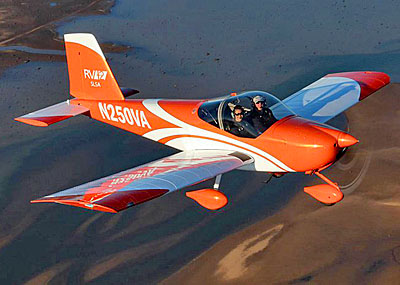
Lets say that an S-LSA manufacturer opts to provide an upgrade path to a higher useful load for its existing models, could E-LSAs that either started life as the same make and model or those built from a kit follow suit? Well, the current E-LSA regulations might suggest not, as E-LSAs must be operated in accordance with the operating limitations issued to the aircraft at the time it receives its airworthiness certification. So, you could have the strange situation where Experimental aircraft are being held to a tighter standard than the one that is being applied to a higher level of aircraft. Basically, a reversal of the FAA concept of a continuum of safety.
The NPRM does little to clarify any of this, but it would not be the first time that there has been this effective reversal of safety logic. Here’s another example. At the present time, a fully certified aircraft under Part 23 can run over engine TBO when operating under Part 91 but an S-LSA might not be able to, depending on the whim of the aircraft manufacturer. Many of the proposed changes are considered to be beneficial to safety, such as increased weight and controllable propellers, so why would it be in the general interest of safety to create a two-tier market?
About Legacy Aircraft
Something else to consider: How might the expansion of Light Sport definitions affect existing legacy aircraft that will now fall within the Light Sport Eligible category?
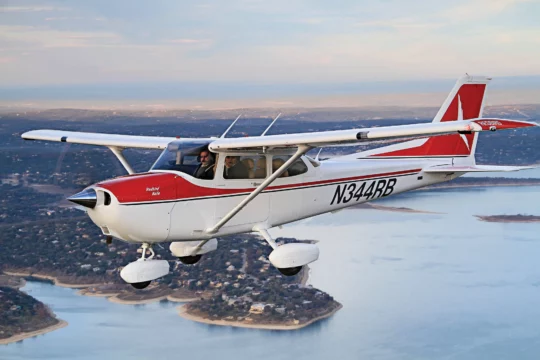
Here is where things get interesting. Part 23 certification can act as a two-way barrier by protecting legacy aircraft manufacturers that have amortized their investments many times over due to the ultra slow/no pace of technological advances in legacy engines while limiting new entrants to the four-seat certified market because of the costs of entry.
The Cessna 172 has effectively set the price expectation for training aircraft which has then increased the profitability and attractiveness for other companies as well such as Piper, Cirrus, Diamond and Tecnam who are able to price at similarly elevated levels due to shortage of capacity and high flight school demand. Product pricing can certainly come from a formula that starts with costs and adds a margin, but in the case of a protected market (which is what certification does) pricing can be whatever the market will bear.
MOSAIC potentially lowers both the barriers and the cost of entry for new four-seat aircraft as they can be manufactured to an agreed standard and use components that have not, themselves, had to go through very expensive certifications. With many traditional legal design burdens lifted, we can reasonably expect to see new aircraft that are lighter but potentially stronger than their legacy colleagues, full of avionics that are a fraction of the cost of the fully certified versions and with engines that are more efficient, use less expensive fuels and weigh less.
It is certainly possible that new entrants will simply follow existing pricing trends, but given volume opportunities and the need to break into a very restricted, brand-conscious market, they are more likely to seek market share through price and features. Most flight schools cannot afford brand new aircraft from any of the current market leaders because a new plane offers no discernible operating cost advantages over the same model that is 20 or more years old, and any ability to price at a premium for new versus old is negligible.
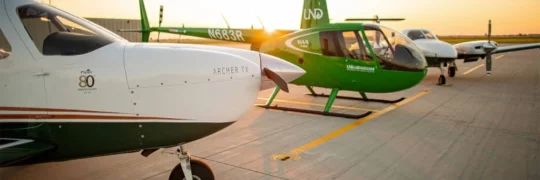
UND’s training fleet is underwritten by school tuition, something that smaller flight schools can’t bring to bear.
The new aircraft market for training aircraft is currently limited to a very few, very large flight schools who are often part of a college program so can cross subsidize through tuition fees for academic courses. New, four seat Light Sport aircraft built to the new ASTM Light Sport standards could easily be sold profitably for half of the price of a legacy aircraft while offering engines that could decimate operating costs and avionics that are at least comparable, if not better, in functionality and ease of use.
Taking the Cessna 172 as an example, this plane would now be Light Sport eligible but still constrained by certification limitations and a price that could be double that of new competition. Is that a sustainable position? Only time will tell but the legacy models could potentially be re-tooled and equipped in line with ASTM standards and relaunched as a Light Sport. This would bring certain costs down but require new investment in manufacturing practices which may leave the net costs of production unchanged but pricing at a potentially much lower level in line with new generation Light Sports.
How Will MOSAIC Influence Flight Training?
The answer is probably in multiple parts. The first, and immediate, answer is that it will boost the attraction of holding a Sport Pilot license or exercising Sport Pilot privileges. The vast majority of flight schools and rental fleets do not offer any Light Sport aircraft for rent and do not see the benefits of having multiple training options just to cater for this audience. With existing aircraft in the fleet becoming Light Sport eligible, schools could well see a fast expansion in Sport Pilot training and rentals. Existing Sport Pilots who downgraded from full private and above certifications will get rapid check outs in legacy aircraft and owners who had previously needed to sell aircraft because they did not feel comfortable with full medical renewals or BasicMed, will likely keep them. The possible downside of this could be a further restriction on the supply of affordable used aircraft as owners choose to retain them plus more people looking to rent.
Secondly, for others, the Sport Pilot license would become a more affordable and accessible option to get into flying as more airports would now have planes they could fly once they achieved their Sport Pilot Certification. However, there is a certain stigma still attached to both Light Sport Aircraft and Sport Pilots probably due to lack of understanding and some of the myths discussed above.
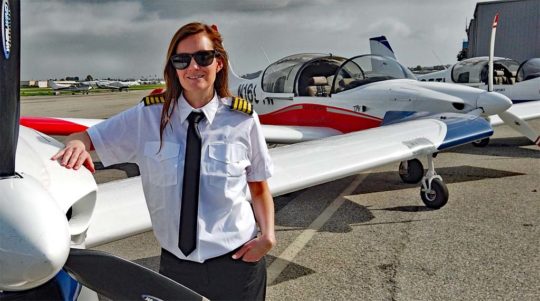
At the present time the content of a Sport Pilot check ride and Private Pilot check ride is effectively the same with no difference in expected performance or maneuvers. The oral exam would have some differences concerning limitations and privileges that come with the certification. Currently a Sport Pilot could, through experience and with an instructor, gradually add-on the capabilities and training that would be required for Private Pilot privileges—3 hours of instrument training, 3 hours of night, airspace clearance, towered landings and additional solo time. Ironically, none of these “add-ons” are actually specifically tested during a second flight test for Private Pilot beyond what had already taken place under the original Sport Pilot check ride. Consequently, a Sport Pilot moving to Private Pilot is being tested twice for the same skills with the same performance requirements but having to pay for both an extra written test and flight test.
Not surprisingly, this acts as a disincentive for people to start with the more affordable and swifter option of a Sport Pilot license if their ultimate goal is to add ratings later. The obvious solution to this would be to make Sport Pilot the starting point for all aviation certifications with a formal DPE conducted check ride and then gradually move up to Private Pilot through adding endorsements with one CFI and a final endorsement from a different one, as is currently allowed for moves between Light Sport Categories. The endorsements would cover both knowledge and flight skills/experience. This would increase the number of pilots who are able to complete something and give them the incentive to continue to add skills and experience knowing that there is not another massive expense waiting for them to be able to move up. As with many aspects of the Light Sport/Sport Pilot revolution, the success of this low-risk modification could also provide data for whether non DPE instructors can be relied upon to safely transition these pilots.
In conclusion, MOSAIC is going to have a major positive effect on aviation accessibility and affordability but not just because of the obvious changes but also from its direct consequences on related matters that might not, at first sight, even be in play.


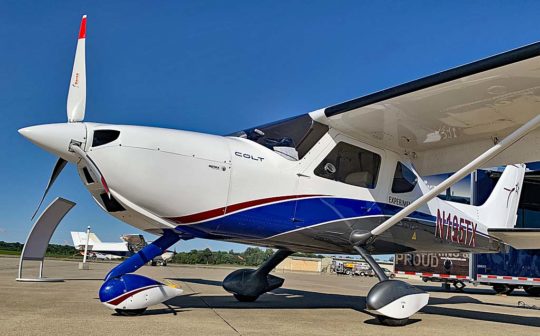
One thing you missed is concerning the weight of the student pilot. I weigh close to 330 Lbs and without getting into details about why it’s hard to reduce my statius weight, I am almost precluded from completing my Sport Pilot training in any current LSA unless I could find an instructor that weighed under 70 Lbs.
If these changes go through, I could do my training and checkride in existing standard aircraft, and then once licensed, fly solo in LSAs.
How does the Recreational pilot fit into these proposals?
The are are only about 70 active Recreational pilot license holders on the FAA registry with, in some respects, fewer privileges than a Sport Pilot including a 50 mile flight distance limitation. Once the new regulations come into effect the few remaining Recreational pilots should simply exercise their privileges as Sport Pilots. Under the current regulations they could already fly LSA’s with full Sport Pilot privileges but would have to follow Recreational Pilot limitations when flying, for example, a Cessna 172. Under Mosaic they will effectively have some restrictions removed when flying as a Sport Pilot in a four seat plane, other than the one passenger limitation that will still apply. The whole history and evolution of the Recreational pilot license would make a great case study of how good intentions don’t always lead to good results.
I find it amusing that a recreational pilot could get a sport pilot endorsement that would essentially cover cross country navigation, resulting in being practically a private pilot.
So a new 4seat LSA is $300,000 and that’s going to improve the number of hours flown and the number of new pilots . maybe for you doctors and lawyers and engineers making $300,000 a year but certainly not for the average guy. 5 years ago you could pick up a decent Cessna 150 for around 10 or 11,000 now the exact same plane is 29 to 49,000.
Very informative. I’ve decided to go all in on MOSAIC. Doing so at this time seems like a safe bet …. to the point of buying a MOSAIC plane, a JMB VL3 916is, knowing I’ll not be able to be the PIC until MOSAIC is law. On the bright side … I’ll be able to get 150 hrs + of “training”, in preparation to get the retractable gear, adjustable prop CFI endorsements immediately. I can’t imagine the FAA will renege any of the proposals in the NPRM, in fact I think they’ll raise VS1 to at least 58, possible 60 knots! I truly hope MOSAIC is the game changer I think it’ll be … Im betting on it!
Very well done and thought provoking. I earned my Sport certificate last September (age 63) and am now pursuing my PPL. Interestingly, the pursuit of my medical certificate has been the best incentive for improving my health in decades! I’m buying a light sport and it’ll be interesting to see how the integration of MOSAIC with the existing fleet (both LSA and Non-LSA legacy aircraft) workout. The stair-step approach to training makes sense to add skills as appropriate (VFR only as is now and adding basic instrument, night, variable speed prop, retractable gear, etc). Also, interesting to see N250VA in the article: that was the aircraft in Frederick for my very first lesson!
This is a well-reasoned analysis of MOSAIC.
The improvements are long overdue.
This is one of the most thoughtful, well reasoned articles about LSA and Mosiac that I’ve ever read. Let’s have some more articles like this one!
Interesting read. Well done. That is interesting as you can get endorsements up to almost private pilot but then it all stops because of the medical requirements. Quite the conundrum!,
Amen Donnie ! I was thinking along the same lines.
Great input and thought. Thanks for the Colt picture. We are positioning ourselves with MOSAIC in mind and taking advantage of early approval of similar rules in Brazil. Look for our 4 seater Stallion. The 200hp has accumulated several hundred hours and today the 260hp initiated data flights. More to come very soon.